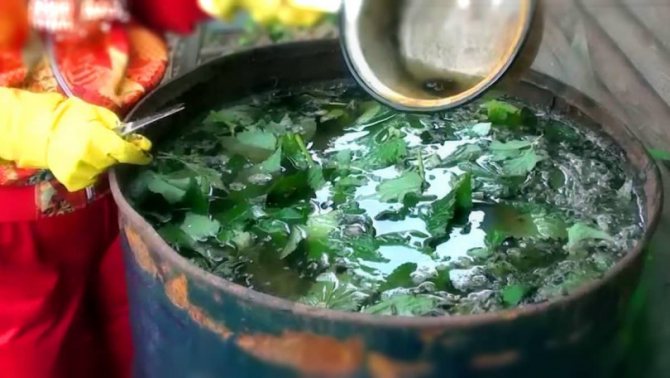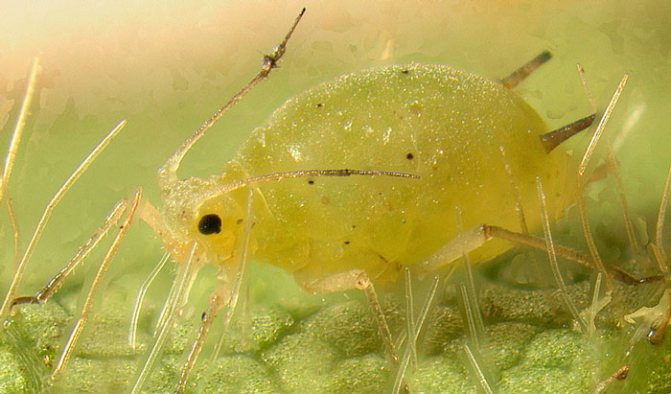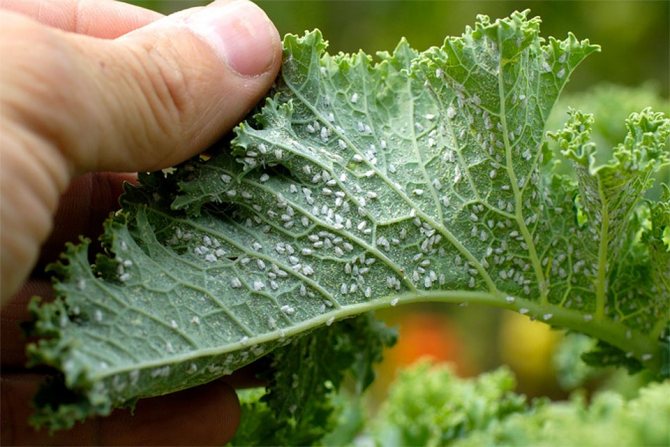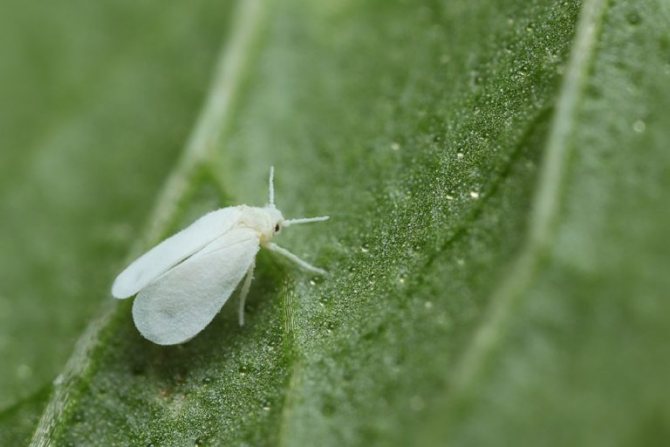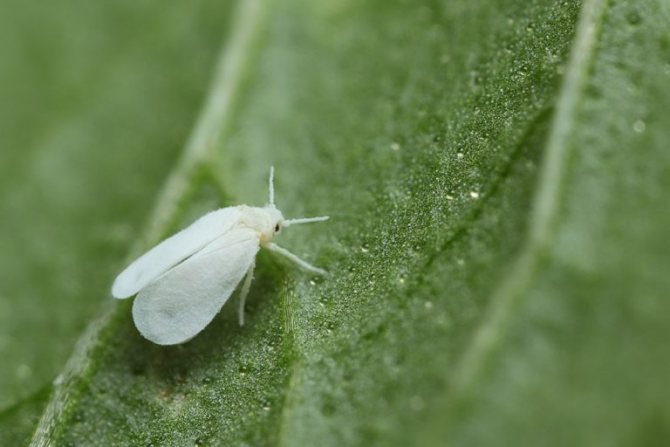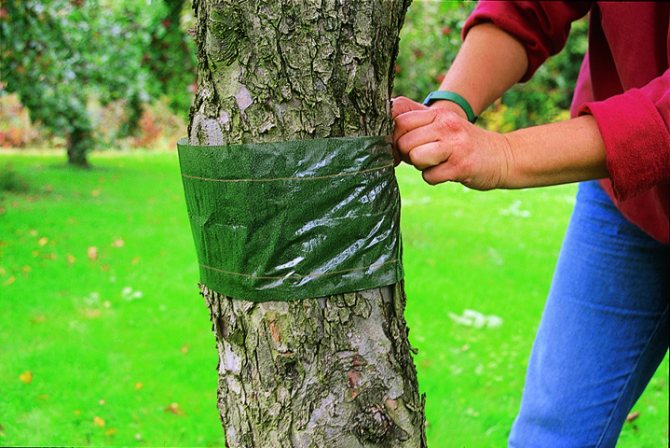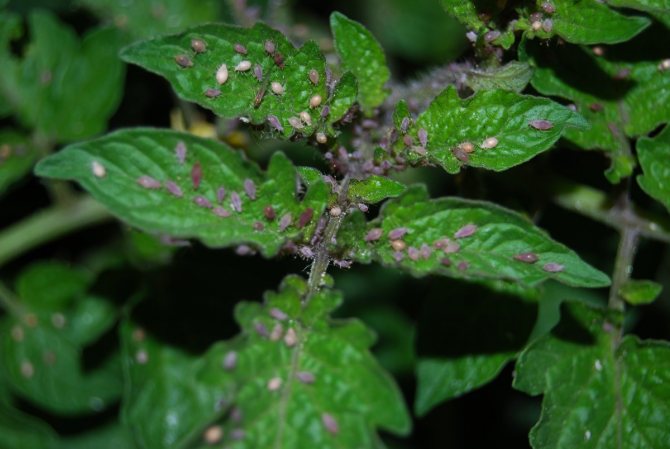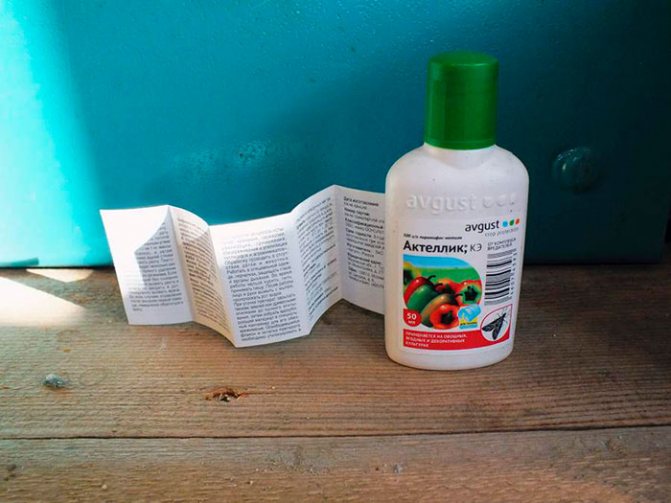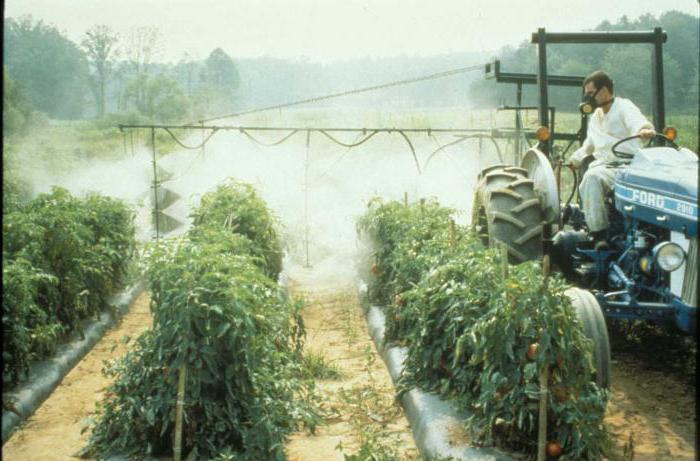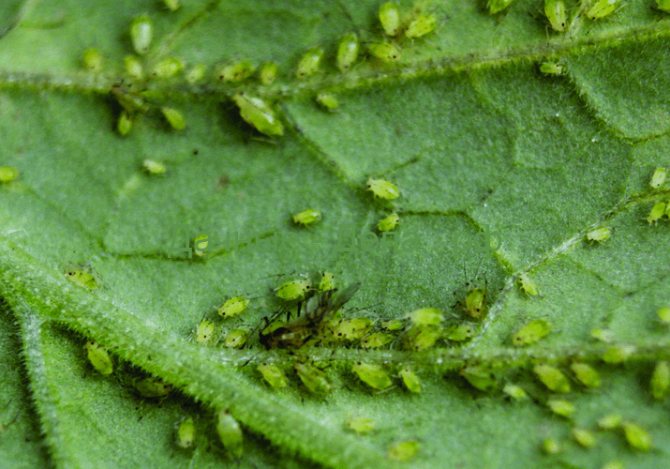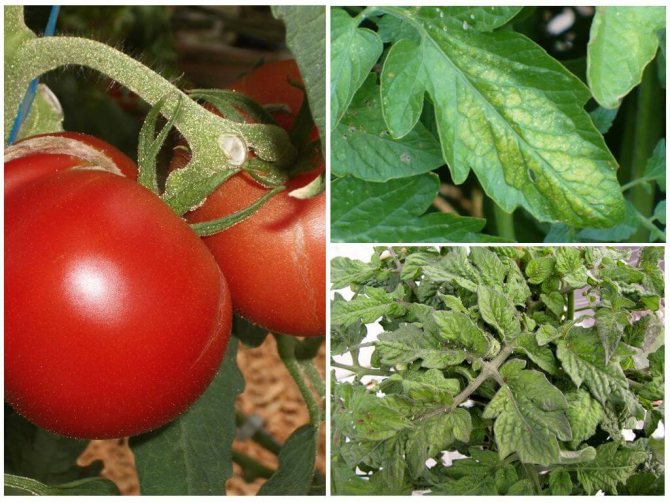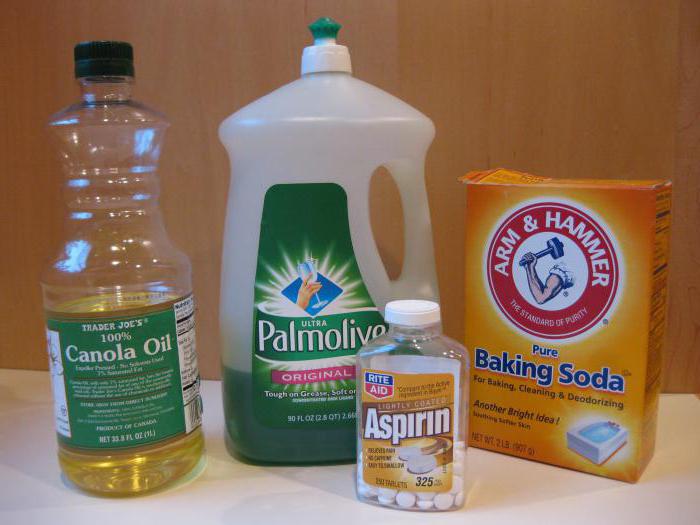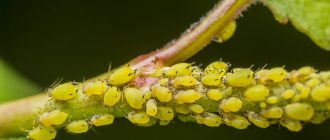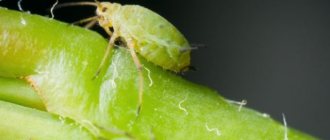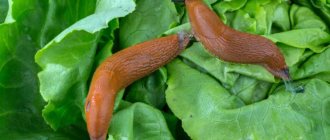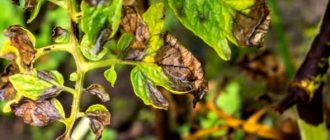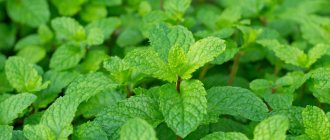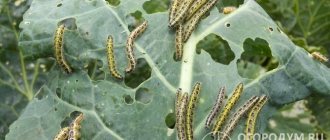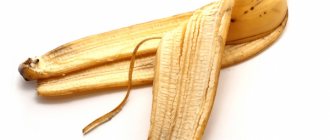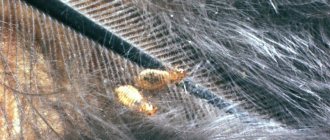What types of aphids do tomatoes eat?
Aphids differ in external characteristics, in the structure of the organism, therefore it is recommended to know which species appeared on the plants and what features it has.
Black
Black garden aphids are divided into the following types:
- brown;
- dark green;
- blue.
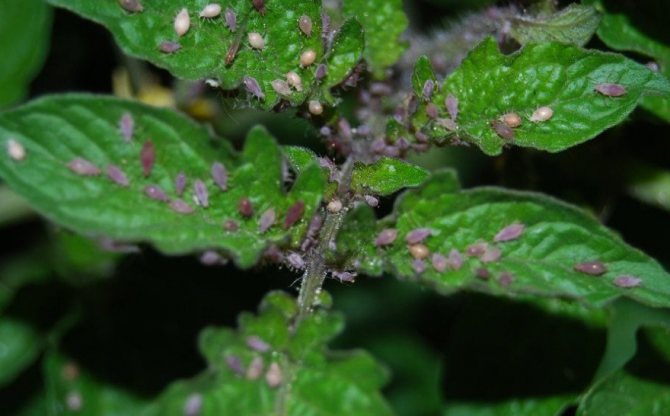
Outwardly, insects are about 0.5 cm long, with a flat body in the form of an oval and many legs.
Did you know? Some aphids are already pregnant at birth, which is why they reproduce so quickly.
They settle on the trunks of tomatoes, as they eat the juice of the plant. Usually, the settlement is massive, so the entire plant is covered with many insects, and not singly. The black subspecies lives up to 14 days, but manages to lay more than 100 eggs of offspring.
White
White aphid externally has the shape of a drop, as well as a white color, which is why it is sometimes compared to drops of morning dew. If you look closely, you can see the typical structure for this species: proboscis, antennae, many legs. The body is translucent, it can be with or without wings. Also, this species is called root.
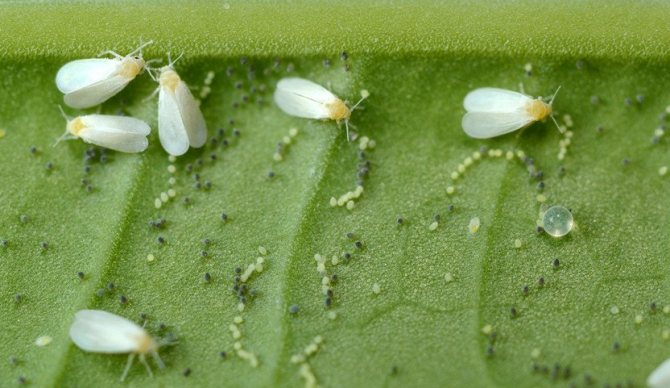

Peach
A feature of this species is its small size compared to others, up to 2.5 mm in length. The body is oval, with a trunk and antennae. The color is saturated, peach, but slightly transparent, sometimes it can be pinkish, the color of the eyes is brown. Females can be both winged and wingless.
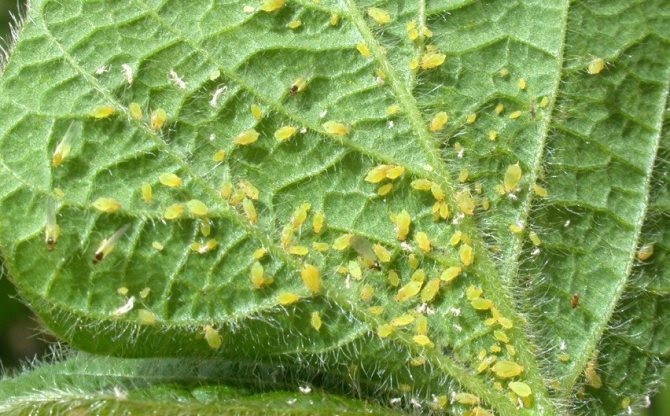

Melons
It has several shades: from yellow to transparent green. It is also called cotton. These are the smallest insects of their kind, as they reach a size of up to 1.8 mm. Carry out about 50 viruses.
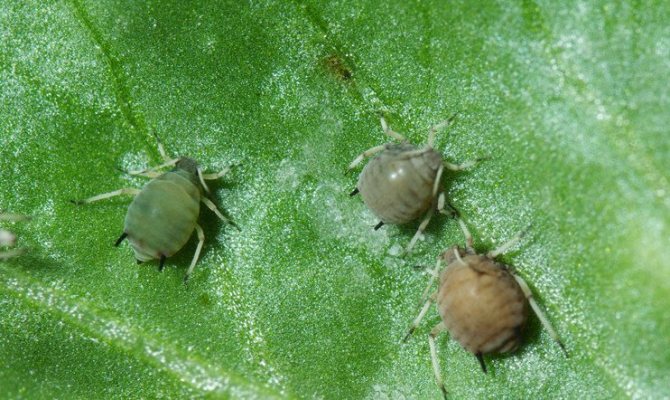

The best greenhouse products
If appropriate measures are not taken, aphids in greenhouses can multiply as rapidly as in open ground.
It is necessary to create conditions that are uncomfortable for aphids:
- the temperature in the greenhouse should be 22-24 degrees, and the humidity should not be lower than 85%;
- regularly remove dead plant branches and ventilate the greenhouse;
- in winter, disinfect the greenhouse with bleach or caustic soda.
If the aphid has started, all methods recommended for open ground are applicable to it. From biological means, the installation of ladybirds in a greenhouse and fumigation with tobacco smoke with tightly closed doors works effectively. Of the chemicals, the most popular in greenhouses are Fitoverm, Entobacterin, Biotlin.
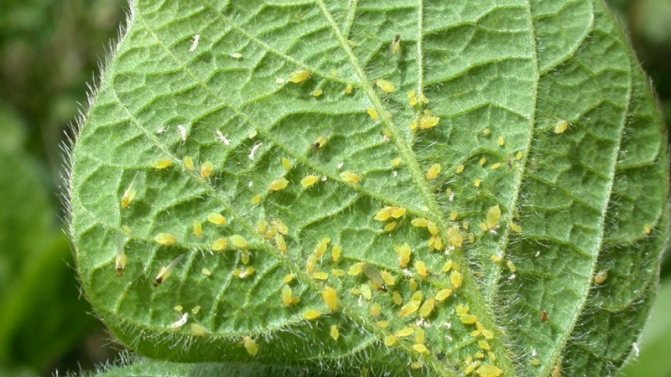

For open ground
The use of products for open ground directly depends on the reproduction of pests. Gardeners should always be on the lookout: aphids are not particularly picky about where to live.
If one year she is indifferent to tomatoes, then the next she can settle there. According to gardeners and gardeners, soap solution and ash are recognized as the best folk remedies. From chemical - green soap, "Inta-Vir", "Fitoverm", the drug "Oberon", used at the initial stage of aphid infection.
Why does aphid appear?
These insects feed on succulent plants, so tomatoes, with their amount of liquid and pulp, are attractive to them. Other reasons for their appearance:
- mistakes were made in the cultivation of the land;
- not enough insects, or birds that eat aphids;
- a large number of garden ants that contribute to the reproduction of aphids;
- infected plants;
- weather;
- poor quality land.
Important! When the first signs appear, it is necessary to start pest control, as they lay a large number of eggs and spread very quickly!
Prophylaxis
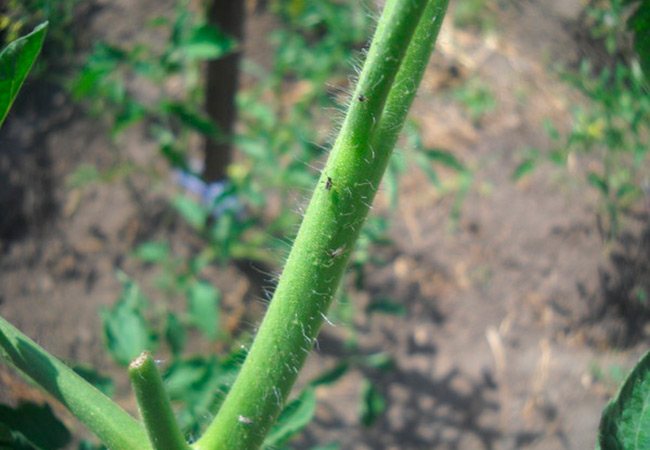

This is the easiest way to eliminate the possibility of aphids. Such measures will help:
- Removal and incineration of all plant residues.
- Digging up the soil without leveling.
- Ash application in spring before digging.
- Planting between rows of plants with a strong odor - marigolds, celery, dill.
- Mulching the soil with hay.
- Watering with warm water.
- Destruction of anthills on the site.
And when even individual individuals appear, protective measures must be taken immediately, otherwise the insidious pest multiplies very quickly.
Marianna Pavley
Signs of aphid damage
Aphids are a very small insect. It is not always possible to notice a single individual.
Therefore, there are a number of signs of damage to this insect:
- a large number of insects in the lower part of the plant;
- twisting of a leaf and a flower (due to the lack of a sufficient amount of juice that aphids drank);
- sticky mucus, which is also called honeydew, containing sugar (therefore, because of their love for sweets, ants "protect" aphids);
- cessation of tomato growth and rotting.
It is necessary to pay attention to the development of the tomato: if it has yellowed leaves and grows slowly, this may be a sign of aphid damage.
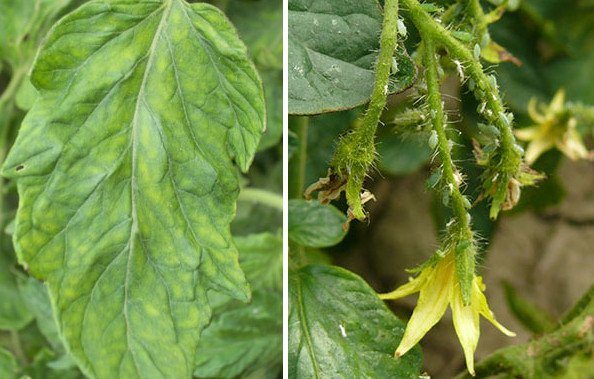

Symptoms
Novice gardeners may not recognize aphid damage in tomato beds in time. The pest consumes juice from the upper part of the shoots, weakens them, as a result of which growth is greatly slowed down. Tomatoes wither, yield decreases. By carefully examining garden crops, you can notice alarming signals of pest infestation:
- clusters of small black and white dots are visible on stems and leaves;
- droplets of sweet liquid appear on the leaf plates;
- seedling growth slows down, some leaves are deformed or look lethargic.
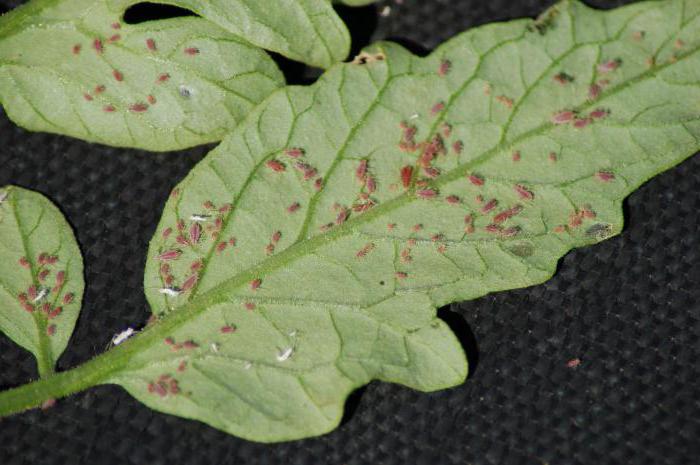

A sooty fungus often develops on sticky secretions of aphids - a black bloom appears. It can be easily removed with a damp sponge. Small lesions merge into solid dark spots. Having noticed signs of infection, it is important to know how to treat aphids on tomatoes at home.
How to process tomatoes?
To quickly and permanently get rid of pests, you need to know how to properly deal with them. There are such methods:
- chemical;
- physical;
- with the help of folk remedies.
Did you know? Aphid houses are called galls. When damaged, insects release liquid to repair the home, while losing weight and risking death from exhaustion!
Physical methods are the least effective, and manual collection or flushing with a hose is time-consuming. But people often resort to them, because they believe that if there are tomatoes themselves, then they should not be processed by anything.
When the first signs of damage appear, measures are immediately taken, since insects spread quickly, especially during the fruiting of the vegetable, since during this period the tomato bush is saturated with a large amount of juice.
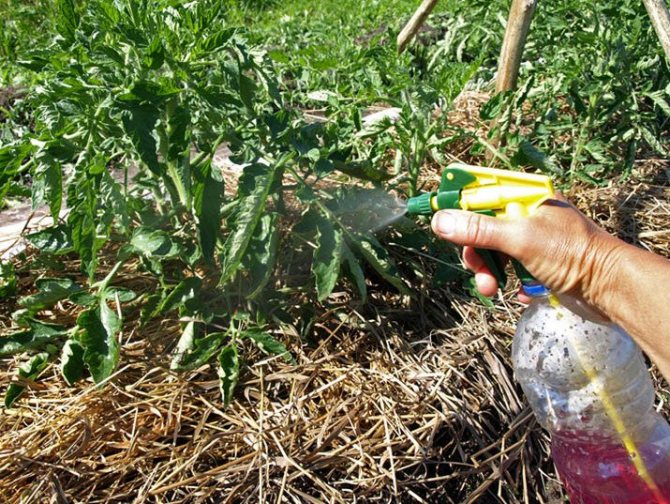

Chemicals
This is a quick and easy way to save the plant, since the aphid habitat is treated only once with the help of a product, and it disappears.
Important! When buying chemicals for aphids, study their effects on human health to avoid poisoning or allergies!
Aphid preparations:
- "Karbofos"... It is necessary to spray before flowering, since harmful substances are released within two weeks, after which they disintegrate. Only works on adults, not eggs. Dissolve 30 grams in 15 liters of water, spray on places where insects accumulate.
- Bleaching powder... It is necessary to dilute 2 tablespoons with 15 liters of water, then process the leaves. A universal remedy for both the plant itself and the soil.
- "Trichopol"... Apply according to the scheme 20 tablets per 10 liters of water. This solution is safe for both tomatoes and human health. The drug is used to treat diseases, but it can also be used as a chemical against insects.
Pay attention to the instructions for the drug used. This will not only help the plant to get rid of pests, but also its fruits will be safe for humans when eaten.
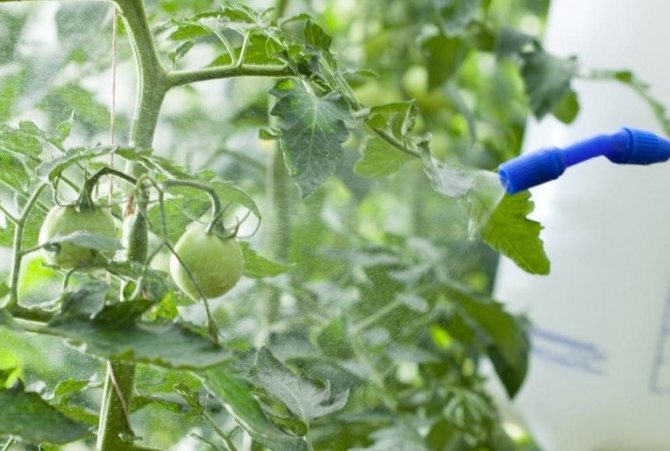

Traditional methods
If chemicals are not suitable, alternative methods are used, which are also effective. But you need to know how to treat tomatoes so that the plant does not rot and develops well.
The following methods are used:
- With soda... To prepare the solution, mix three tablespoons of baking soda in a bucket of water, then treat the affected areas. It should be borne in mind that soda in large quantities affects the composition of the soil, and as a result, the plant develops more slowly.
- Using ammonia... To do this, 2 tablespoons of ammonia are mixed with 10 liters of water, after which for 10 days with a break of 2-3 days, you need to spray the plant around the entire perimeter and adjacent plants for prophylaxis.
Wood ash is also used, but it is effective if the aphid is close to the ground.
Also learn how to get rid of gnats on tomatoes.
Tips & Tricks
- Timely remove fallen leaves, tops and weeds in the compost pit. This will make the site unattractive for wintering pests.
- By winter, the compost pit is covered with a layer of earth to prevent insects from getting out.
- Aphids do not tolerate low temperatures, therefore, after a warm winter, its population and activity increase especially.
- If pests attacked cucumbers, then the next season you should not plant tomatoes in the same place.
Aphids can seriously harm tomato crops. Insects multiply rapidly, so measures should be taken immediately after pests are detected. The best option would be a combination of several methods of struggle.
Reasons for the appearance
Important! Tomatoes are grown using seeds or ready-made seedlings are bought. In the first case, aphids can hide in the ground and become active in a favorable environment. In the second case, individuals may already be on the back of the leaves.
When purchasing young plants, it is important to carefully examine the leaf plate.
Favorable conditions for the development and reproduction of the pest are as follows:
- a warm, dry room without drafts, but well ventilated;
- temperature from +25 to + 30 ° C.
Aphids in stuffy and warm rooms are able to move to indoor flowers, other garden seedlings. Often, individuals were seen on verandas and balconies. They ate almost all ornamental plants.
Let's turn the garden into a flower garden
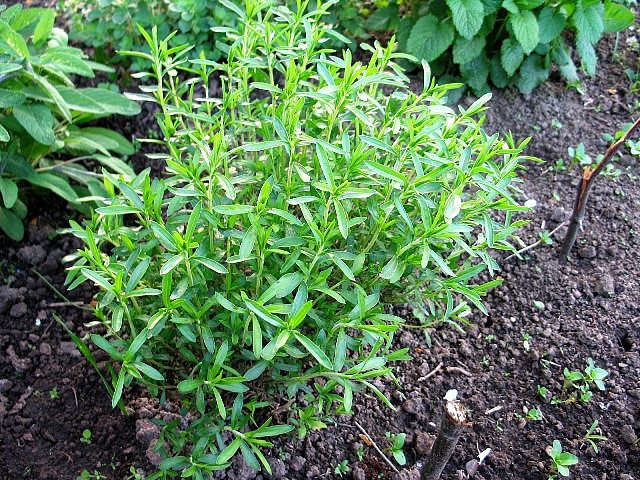

Thyme.
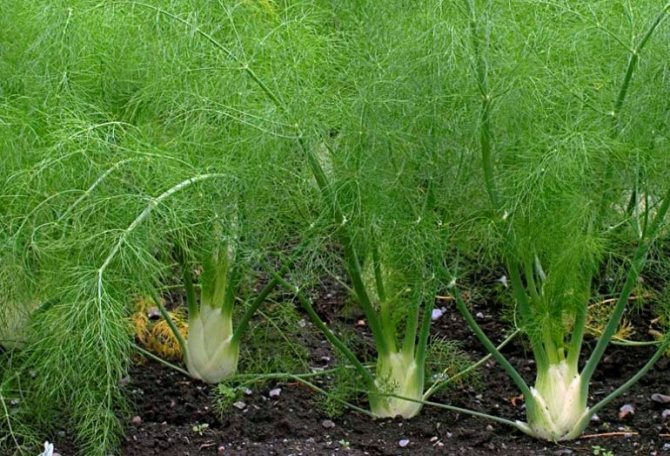

Fennel.
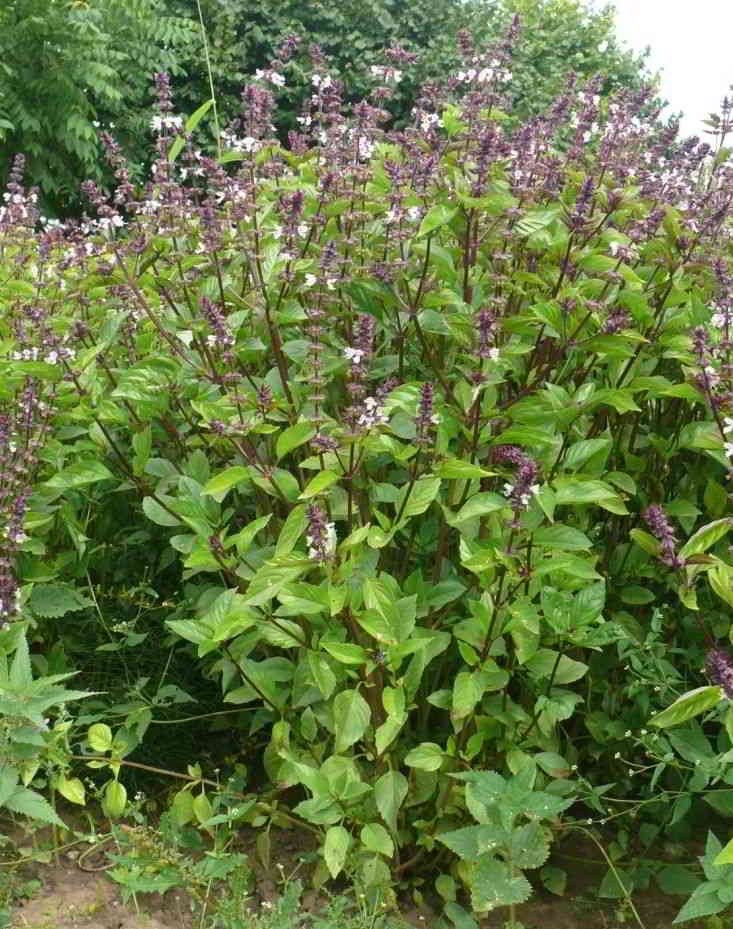

Basil.
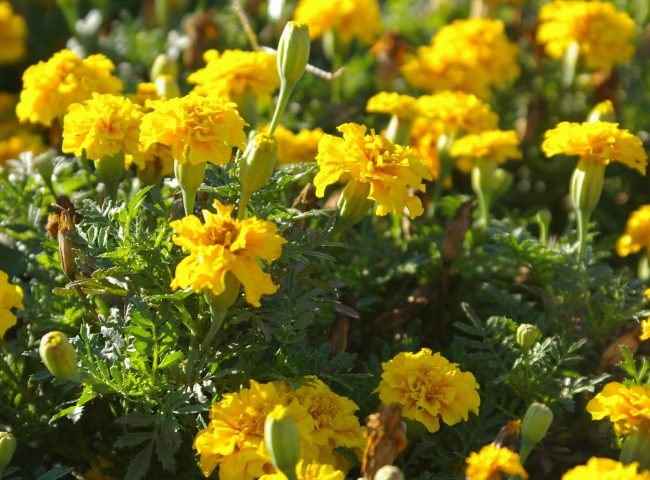

Marigold.


Catnip.
It has long been noted that those vegetable gardens on which smelling plants and flowers grow are more visited by beneficial insects and less pests.
Sowing near tomatoes:
- marigold;
- basil;
- catnip;
- fennel;
- savory.
These plants are of the same age, they will decorate the garden and serve as a spice to the table. By sowing these plants, you can attract insects to the estate that will help fight aphids: ladybug, lacewing, ground beetle.
You can not ignore the perennial: mint, melissa, oregano, thyme, hyssop, lavender, they all give off essential oils that are unpleasant for aphids.
You can also use the services of plants that attract aphids more than tomatoes. Having sown nasturtium, glue, petunia not far from the garden, you don't have to worry about tomatoes. Insects will first of all give preference to them.
Tomato leaf recipe
As noted, tomatoes, as a member of the nightshade family, contain toxic compounds called alkaloids in fruits and leaves. When tomato leaves are crushed, they release these substances, which, when diluted with water, become even more toxic to insects. In addition, the liquid form of the solution allows for a more efficient spray treatment.
To make a solution like this, simply soak one to two cups of chopped tomato leaves in two glasses of water. If possible, ripe fruits can also be crumbled there, but you should not use store-bought tomatoes for these purposes - they must be fresh. The mixture is infused during the day. After that, the "porridge" must be drained through cheesecloth and add 300-500 ml of water.
How to fight?
What to do if the plant is attacked by insects: fight with chemical, biological agents. They help get rid of colonies in a short time. Effective substances penetrate through the oral apparatus into the intestines, trunk. But not every person decides to treat plants with pesticides, because these substances can remain in plants.
Folk remedies are safe, but ineffective methods. They can only scare away insects, not destroy. As a result, aphids move to neighboring vegetable crops and continue to reproduce safely. But first things first.

